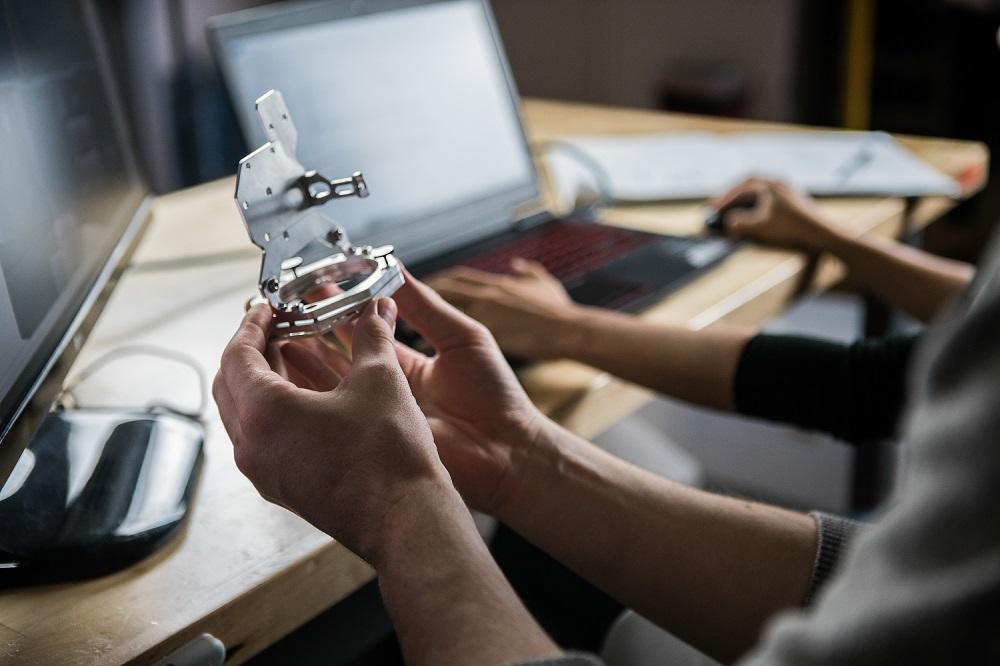The emerging 3D printing ecosystem, which existed barely a year ago, is growing at an incredible rate. in a networked environment where everyone has access to everything that is going on, yet is influenced by local conditions, knowledge and ideas; New ideas can arise and spread incredibly quickly, and can be very hard to predict.
For the purposes of this article series I have divided the emerging ecosystem of 3D printing into various discrete parts, however, from talking to what is happening in the field and the companies involved it is clear that there are no pure companies. Which work perfectly in any of these convenient divisions. Each company is keenly watching the sector and brainstorming internally to try to understand where the market is headed and to position itself to serve and benefit from . It is exactly as it should be and very exciting to watch.
Established companies that have had some time to build a presence and understand how the ecosystem works include MakerBot and Thingiverse, Autodesk’s 123D Apps, Shapeway, and even CGTrader, which was founded in 2011. it was done.
A complex network of distribution channels, designers, marketplaces, print suppliers and buyers is being created, supported by publications, communities and event experts.
A few years ago there was no trade show dedicated solely to 3D printing, although pairs such as TCT (UK) and Rapid (USA) displayed the technologies heavily; Now, a growing number of event organizations are spreading their net with their international array of Inside 3D Printing Shows, including the dad of the Internet trade show, Alan Meckler. However, as we’re talking an ecosystem of multiple parts, it’s important not to think that there’s any one-size-fits-all show, and already small specialist shows are popping up to fill the interstices. Huh.
Peter Hermans runs a series of 3D print events including 3D publishing, bioprinting and a 3D materials event. As they tell me, they started this program because no technology is useful without content, yet content and content management are one of the major emerging pieces of the puzzle. This is similar to the emergence of the World Wide Web twenty years ago: the first was the Web, which attracted technocrats to the concept.
The moment content and content ideas were added to the mix, everything started growing at an incredible rate. It’s easy to forget that ailing giants like Yahoo started life as a listing service for things available on the Internet. Services that already exist, such as Thingiverse, can be much larger businesses than the hardware companies that spawned them.
But, as I’m pointing out, no part of this mix can provide an ecosystem in itself. Everything has to be plugged into other parts, whether they are parts of the same company, or more usefully, services provided by other companies. Therefore, we are trying not to replicate and compete with others on intelligent partnerships and startups we already have, but to add to our services. Companies like Printr and Pinshape are working to build a value chain in this way.
There are a number of local startups that are looking for specific geographic markets, such as 3dPrintU in Russia and Rinkk in Japan. It remains to be seen how these integrate themselves into the wider geographic and technological landscape.
Some companies are already climbing above and away from the basic 3D print space, recognizing that the tools and processes needed to design and deliver 3D prints are the more complex and smaller cousins of long-established CAD tools and services.
It is again in the same way that in the early days of the Internet, it was quickly realized that HTML was a smaller cousin of existing structured markup languages and that a look at existing markup tools could provide an indication of how this new field developed. Will happen. . Thus, Shapedo, which has an interesting tool for iterating and sharing 3D designs, wants to develop more powerful tools for the CAD design industry, using the structures of the 3D object store industry as a basis.
Miproto, like RedProto, offers a combination of design service and 3D printing. Buildparts provide a high end design and print service exclusively for technical parts. Fabnami does provide an API for sending orders for print, but it’s early days for them. 3DKitbash offers a range of ready designed items, test and development kits. They have an interesting combination of files and parts and can prove those who doubt the ‘pay for 3D object file’ business model wrong.
Printr is working on simplifying the process of creating content with a variety of apps and processes, somewhat like Autodesk’s 123D apps.
